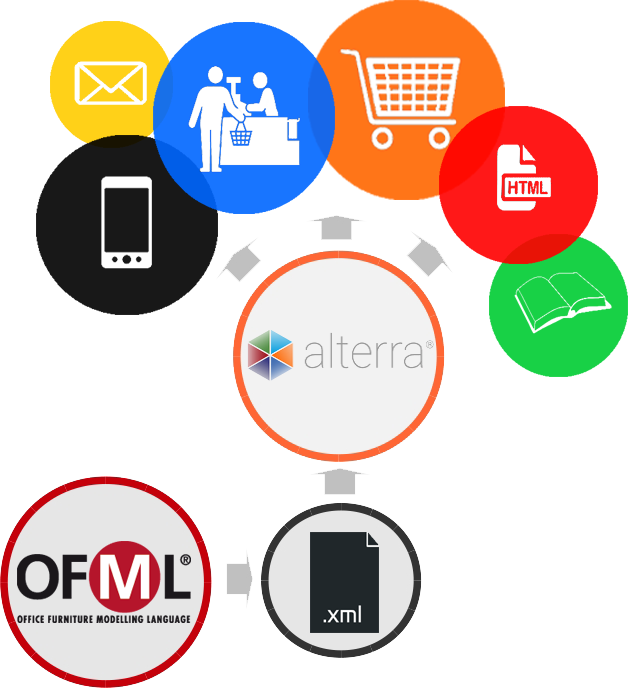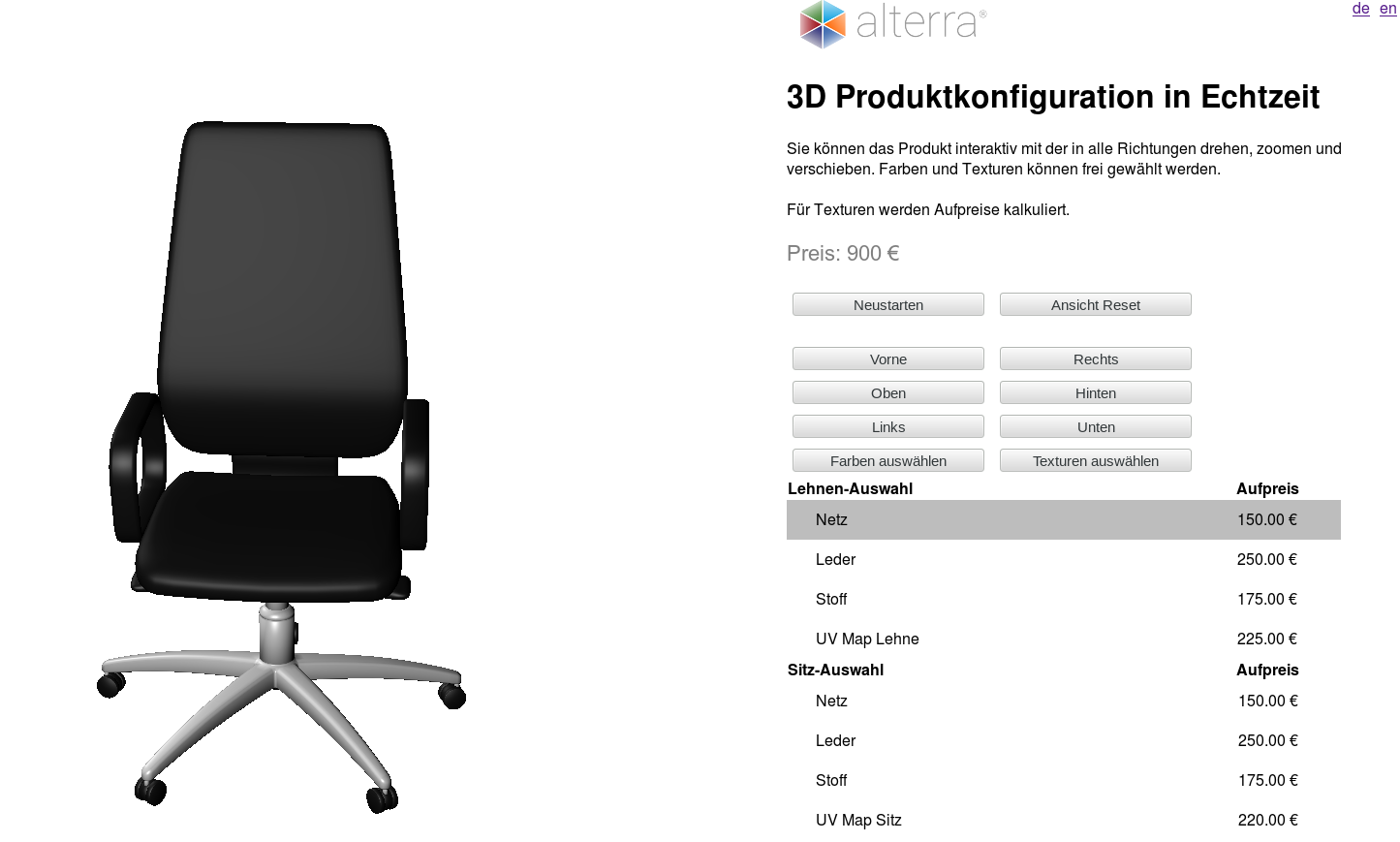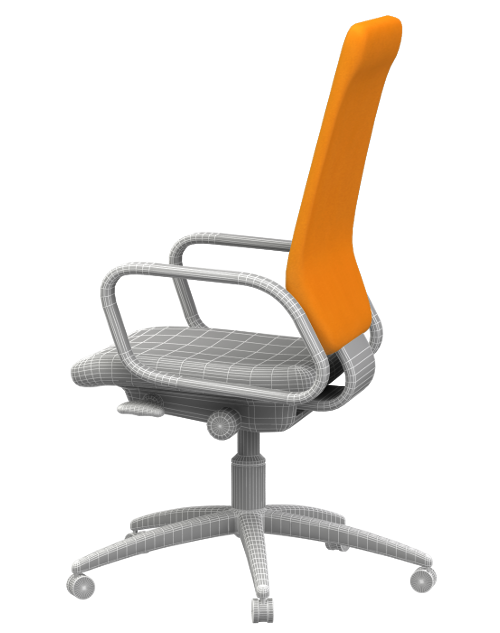OFML (Office Furniture Modeling Language) was developed by the German Association of Office, Seating and Object Furniture (BSO) to establish a general standard for the description and configuration of furniture and for room planning tools for the furniture industry to allow for the combination of furniture from various manufacturers. Without such a data standard, following to the initiators each manufacturer would have their own data format, i.e. their own proprietary isolated application. Room planning applications that combine the furniture of multiple manufacturers (tables of manufacturer 1, chairs of manufacturer 2, cabinets of manufacturer 3) are only possible if the data provided by each manufacturer are standardized.

OFML with PIM for Omni-Channel-Marketing
OFML: a very complex format with disadvantages
The result of this effort is the OFML data standard that is now also used by some furniture manufacturers. However, this format comes with some disadvantages: it is not based on newer standards such as XML, but has been defined as a format based on relational tables. This means that the format requires the generation of several tables with dependencies to each other. In addition, a special programming language is used to define dependencies between product attributes and describe rules for pricing.
The documentation for the format is patchy in some places, and to date there is no open-source system for the use of the data. Most users maintain, generate and visualize OFML data via a special software provided by EasternGraphics. This situation can be described as a monopoly within an industry – good for the software company that covers all areas, bad for the other companies that can only obtain the software from a single source.
Objective of OFML: data foundation for planners and architects
The original goal of the developers of this data format was that companies could provide data for room planning to architects and planners via a standardized interface. Unfortunately, only few software companies jumped on the OFML train so that the software components from the creation of the data up to room planner applications are all provided by the author of the format alone.
There has been hardly any software to use the data in eCommerce, so far
From the very outset, the data format has probably never been designed to be used in eCommerce via the Internet – rather on computers with locally installed software.
Over the last few years there has, however, been a growing demand to use product data for online shops, websites, apps and online portals – all summed up under the keyword Omnichannel Marketing. The author of the format subsequently released a so-called "OFML API" for this purpose, which can be used to harness the extremely slow relational data structure for web pages; however, due to the many relations between the tables access to the data is very slow. In web shops, access to a product page might therefore well take more than 10 seconds. Loading times in the order of 10 seconds are, of course, not acceptable. Also more computing power can only be a limited remedy.
Solution Step 1: Converting the relational data base to XML
To take a first step away from the antiquated data storage and transmission practice via a format with various tables, Sepia implemented a OFML to XML converter. The result of this conversion is an open, well readable data format that can be used with state-of-the-art applications. Some conceptual disadvantages of OFML as their own definition language for pricing could of course not be eliminated, but it is at least ensured that the data is readable and can be validated and imported.
Solution Step 2: Import of XML into Alterra PIM
Now, to make the product data usable for marketing and sales, companies usually use PIM software. For Alterra PIM, Sepia implemented an OFML-XML import feature. This import feature writes the OFML data into the PIM system where it can be processed and optimized for output channels such as web shops, web sites, apps or product catalogs.
An extensive web catalog with representation of product variants or an extensive price list will be available at the push of a button. Alterra PIM can map both the data base and the pricing logic from OFML and include more information that is important for sales and marketing.
This will make your data available – in addition to the use in room planning tools – for other at least equally important output channels:
- Use of OFML in web shops (e.g. in open-source shop systems)
- Variant configuration for sales purposes
- Product configuration in eCommerce ( e.g. with Alterra PCM )
- Automatic catalog creation (printed catalogs and websites)
- 3D product configuration (click here for a sample configurator )
- Output of configured products as high-resolution rendered 2D graphics
3D Product Configuration in Realtime
Conclusion
With reasonable effort and through the use and enhancement of OFML data already existing at the manufacturer, it is possible to generate compelling added value that goes far beyond the target originally defined for the OFML format. The conversion of OFML into an open, well usable format and the subsequent optimization of the product data in the PIM system open up many new opportunities for product marketing and sales. Existing data material can now finally be used for omnichannel marketing without the obstacles of proprietary industry solutions.
Contact
Sepia GmbH & Co. KG
Ernst-Gnoss-Strasse 22
D-40219 Düsseldorf - Germany
Phone: +49 211 51 419 75
Phone alternative: +49 211 74 958 712 0
E-Mail: info@sepia.de
Looking for consultation or a web demo?
Get it here.
Projektberichte
Lesen Sie diese Projektberichte über die Integration von Alterra PIM:
- Segmüller
- abholen.de von EDEKA
- Toshiba Europe
- Messer Group
- WENKO Wohnideen
- Thermokon Sensortechnik
- Halfen Group
- M+W Dental
- Stahlwille
- WASI
- Rudolf Müller Verlag
Diese international operierenden Unternehmen haben mit Hilfe von Alterra PIM erfolgreich ihr Produktdaten-Management verbessert.


